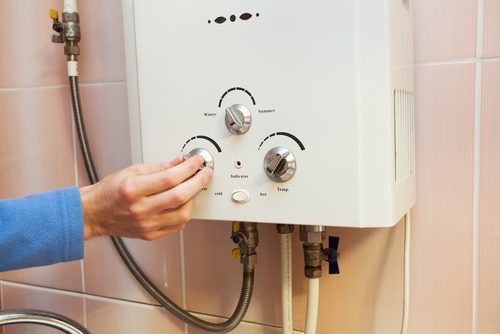Maintaining Your Home's Hot Water System: Important GuidelinesBest Practices for Maintaining Your Home's Hot Water SystemKey Care Techniques for Your Home's Hot Water System
Book InstantlyOn this page below you will discover additional dependable expertise regarding Tips For Maintaining Your Hot Water Heater.

Warm water is essential for everyday convenience, whether it's for a revitalizing shower or washing recipes. To guarantee your hot water system runs successfully and lasts much longer, regular upkeep is key. This article offers functional pointers and understandings on how to maintain your home's warm water system to prevent disruptions and costly repair work.
Introduction
Preserving your home's warm water system may seem difficult, however with a couple of basic actions, you can guarantee it runs efficiently for years to come. This guide covers everything from understanding your hot water system to DIY maintenance tips and knowing when to hire professional help.
Importance of Maintaining Your Hot Water System
Normal upkeep not just prolongs the life-span of your warm water system however likewise ensures it operates successfully. Disregarding maintenance can cause lowered efficiency, greater power costs, and also early failing of the system.
Indications Your Hot Water System Needs Maintenance
Recognizing when your warm water system needs interest can stop major issues. Look out for signs such as inconsistent water temperature, strange sounds from the heating system, or corroded water.
Flushing the Water Heater
Purging your hot water heater gets rid of debris buildup, improving performance and extending its life.
Checking and Changing Anode Rods
Anode poles stop rust inside the tank. Evaluating and changing them when worn out is critical.
Complex Concerns Requiring Expert Aid
Examples consist of major leakages, electrical troubles, or if your hot water heater is consistently underperforming.
Regular Expert Maintenance Perks
Professional upkeep can include thorough examinations, tune-ups, and making sure compliance with safety and security requirements.
Evaluating and Changing Temperature Level Settings
Readjusting the temperature setups guarantees optimal performance and safety and security.
DIY Tips for Upkeep
You can carry out numerous maintenance jobs yourself to keep your warm water system in top problem.
Checking for Leaks
Regularly check pipes and connections for leakages, as these can lead to water damage and greater bills.
Comprehending Your Warm Water System
Before diving right into upkeep tasks, it's valuable to recognize the basic parts of your hot water system. Usually, this consists of the hot water heater itself, pipes, anode rods, and temperature level controls.
Monthly Maintenance Tasks
Routine month-to-month checks can help catch minor problems before they intensify.
Testing Pressure Relief Valves
Checking the stress safety valve guarantees it functions correctly and prevents extreme pressure buildup.
Insulating Pipelines
Protecting warm water pipelines decreases warm loss and can conserve power.
When to Call a Specialist
While DIY maintenance is useful, some concerns need specialist experience.
Final thought
Regular upkeep of your home's hot water system is necessary for efficiency, longevity, and cost financial savings. By adhering to these tips and understanding when to seek specialist aid, you can ensure a reputable supply of warm water without unanticipated disruptions.
How to Maintain an Instant Hot Water Heater
Before tinkering with your hot water heater, make sure that it’s not powered on. You also have to turn off the main circuit breaker and shut off the main gas line to prevent accidents. Also turn off the water valves connected to your unit to prevent water from flowing into and out of the appliance. 2. When you’re done, you have to detach the purge valves’ caps. These look like the letter “T” and are situated on either side of the water valves. Doing so will release any pressure that has accumulated inside the valves while at the same time avoid hot water from shooting out and burning your skin. 3. When the purge valves’ caps are removed, you have to connect your hosing lines to the valves. Your unit should have come with three hoses but if it didn’t, you can purchase these things from any hardware or home repair shops. You can also get them from retail stores that sell water heating systems. Read the user’s manual and follow it to complete this task properly. When the hosing lines are connected, open the purge port’s valves. 4. You should never use harsh chemical cleaners or solutions when cleaning your unit. Make use of white vinegar instead. It should be undiluted and you’ll probably use about 2 gallons. 5. Now flush your water heater. This task should probably take about 40 minutes. We can’t give you specific directions for this because the procedure is carried out depending on the type, model and brand of your heater. With that being said, refer to the user’s manual. 6. When you’re done draining the unit, you have to turn off the purge port valves again. Remove the hosing lines that you earlier installed on each of the water valves. Put the valve caps (purge port) back in their respective places and be very careful so as not to damage the rubber discs that are found inside these caps. 7. Now that everything’s back in place, check your user’s manual again to find out how to reactivate your water heating system. 8. Once it is working, turn one of your hot water faucets on just to let air pass through the heater’s water supply pipes. Leave the tap on until water flows smoothly out of it. https://www.orrplumbing.com/blog/2014/september/how-to-maintain-an-instant-hot-water-heater/

I hope you enjoyed reading our part about Water Heater Maintenance Tips You Can't Afford to Forget. Thanks a ton for finding the time to read through our article. Enjoyed our piece of writing? Please quickly share it. Help somebody else locate it. I recognize the value of your readership.
Click Here